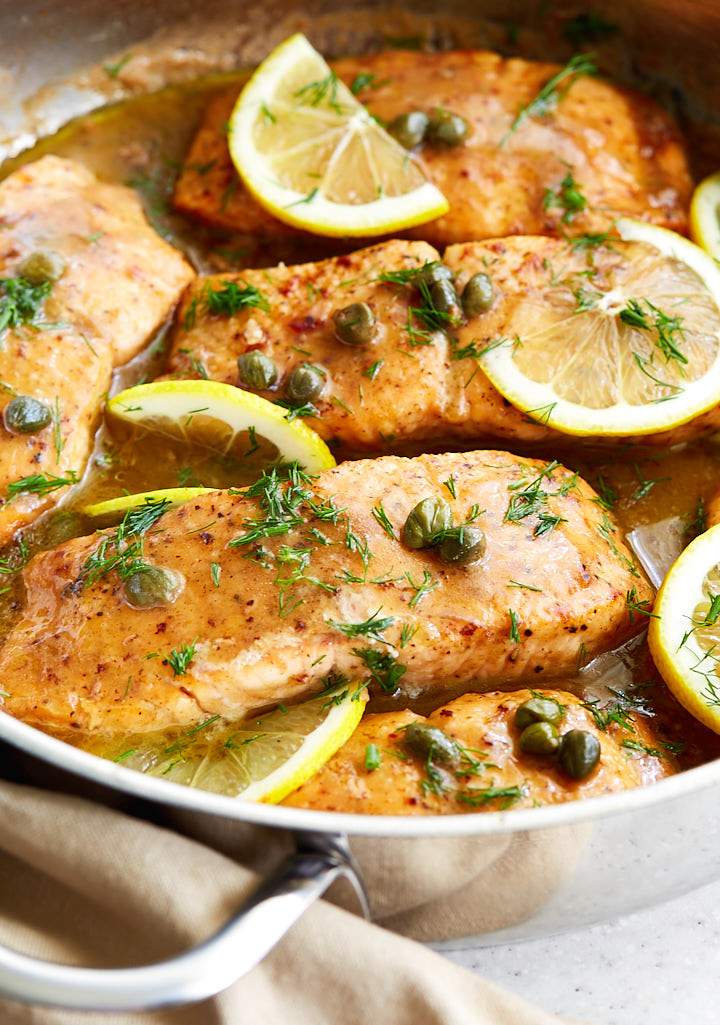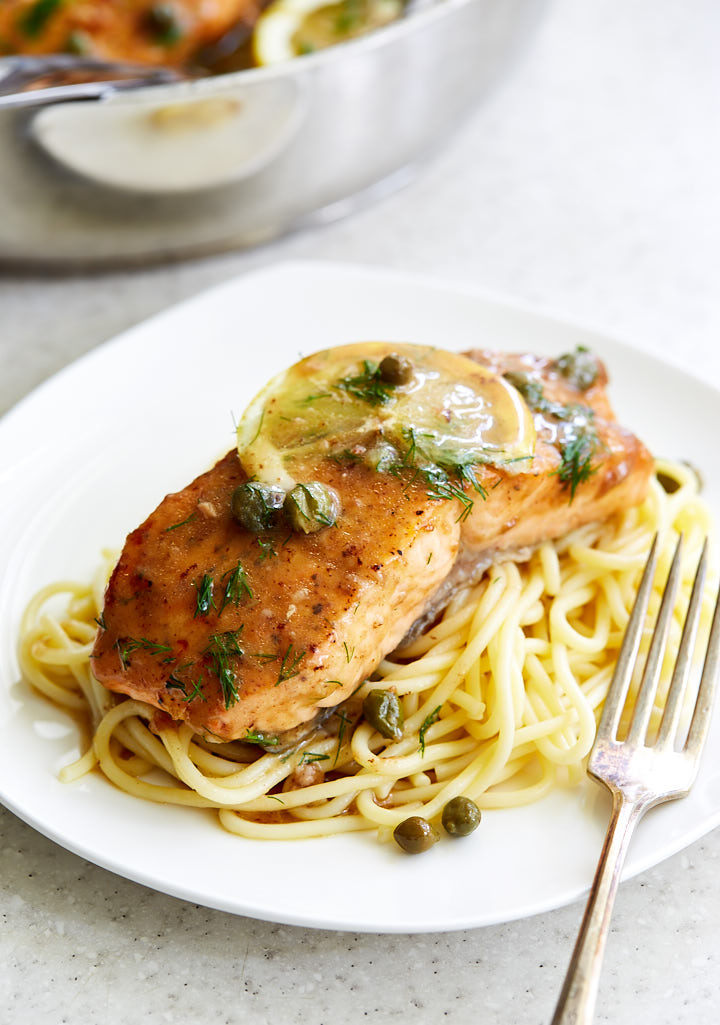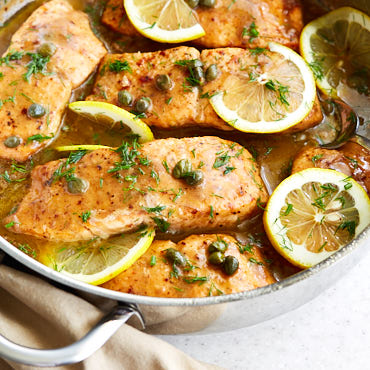What’s really special about this salmon piccata is the buttery-soft texture of the fish. It’s so tender, so soft that you immediately fall in love with it. Searing fish in butter and oil helps achieve that kind of texture. But so does the temperature to which you cook your salmon. I seared on one side for about 2 minutes, until the internal temperature reached about 115F-120F, then flipped and seared for another minute. By the time I finished searing, the internal temperature was about 145F, the perfect temperature for salmon, and the fish had a nice sear on it. Since my salmon was already perfectly cooked during searing, I let it rest until the very end and added it back to the sauce about a minute before taking off the heat. During the rest the internal temperature of the salmon dropped, and one minute of cooking in lemon sauce only brought the temperature back up close to the original level. This way I ensured that my salmon would not get overcooked.
The sauce in chicken piccata turned out to be slightly problematic: there wasn’t enough of it and it was a little too thin to my liking. This recipe fixes both problems. I doubled the amount of sauce, which turned out to be just enough. I also thickened the sauce with the flour left over from dredging. There you have it, a win-win situation. Nothing goes to waste. I liked the thicker, velvety-smooth sauce a lot. It really complemented the butter-soft texture of the salmon. From now on I will be thickening my piccata sauce in every recipe.
Salmon and dill are a match made in heaven, be it baked salmon or gravlax. Of course, you can use any greens to garnish your salmon piccata, but trust me, nothing beats dill here.




